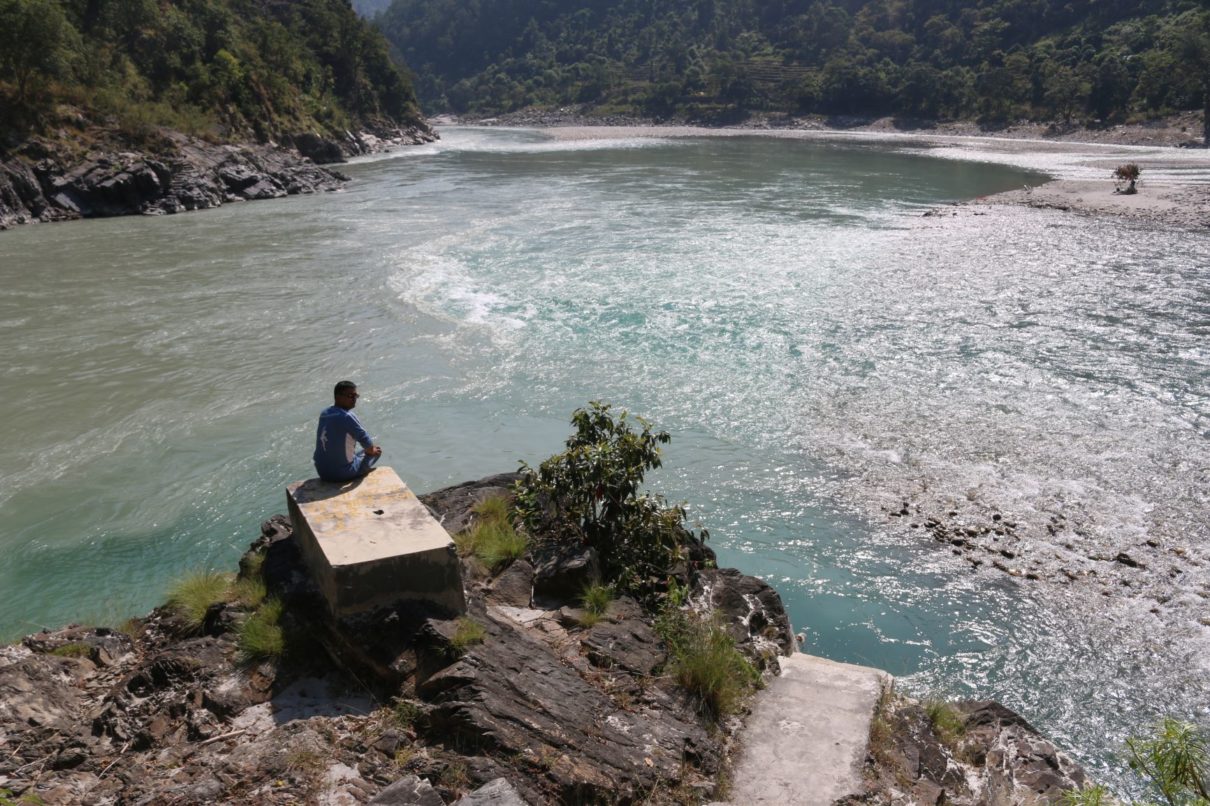Dried yak and chyangra (domesticated mountain goat) droppings are fuel for firing iron stoves throughout the Upper Mustang. Even in prewinter November, the weather at night dropped to minus three to four degrees.
The room doubled as a kitchen and a dining space with painted wooden tables and benches with woolen rugs spread over the top. As a few thangka scrolls hung on the walls, a framed photo of His Holiness, the 14th Dalai Lama, looked on solemnly. My friends showed up as I sampled a glass of uwa rakshi (naked barley liquor). The heat from the stove and the drink managed to take the chill off me. My ears pricked when they recounted the sensational happening. Kunga, a teenage lama (monk), showed my friends around the monastery. They learned he sought ordination into Lama Hood (monkhood) and worked and studied there. The young monk fetched a bundle swathed in vermillion cloth and unwrapped it. What my friends saw left them baffled. He held a shriveled, hacked-off human right hand, which Kunga claimed dated back over 500 years. The hand still had a gold ring on the ring finger. “This hand belonged to the thief who entered the gompa and tried to steal ancient artifacts. The custodian of the monastery caught him red-handed, chopped off his right hand, and turned him over to the authorities. At Tsarang, too, the royal palace holds one,” said Kunga. The monk even allowed them to touch it but forbade them to take pictures. Every monastery in Lower and Upper Mustang prohibits photography. It felt genuine, Shayeet swore, and the rest nodded in agreement. Sonam stood by the story. It was apparently local folklore in Gheling. I decided I’d not let the opportunity to see it myself slip at Mustang Raja’s (King) palace in Tsarang. The next day, we left Gheling and hit the road to Tasarang (3,588m). The morning was crisp but there was no sign of wind. We knew we would face the blast after 11 am though. At a foothill, we ran into a string of horses—regular sightings in Mustang—nibbling on a patch of grass. At sundown, we arrived in Tsarang, built in the 13th century by the first King of Lo, Chhyogel Ame Pal Sangpo. All four of us were fit to drop as we had to tackle the 4,020m high Nyi La pass with the howling, biting wind that furiously lashed at us. As darkness approached, we called it a day. We struck for the white Dzong (fortress) the next day, the palace of the late King of Mustang, Jigme Palbar Bista. Standing high on a sandstone cliff and ringed by a thicket of poplar and wild willow, the five-story structure looked formidable but rundown, almost falling apart—tall crumbling walls in ruins stood close by. The site looked deserted. There was no one around and a sign read closed to visitors. My hopes to see the shriveled hands were quashed. We ran into a middle-aged monk heading towards the town, thumbing his prayer beads as we prepared to leave. He seemed very forthcoming and told us the fort still housed the king’s armory, a gallery, and the royal chambers, but they were all in dilapidated states. One room held the chopped-off human hands. After the 2015 earthquake, visitors got barred for safety reasons. The story at Tsarang differed from Gheling’s though. Going by the local lore, the king ordered to chop off the right hand of the main builder of the palace so he could not erect another of his masterpieces. As we hit the trail, the matter of the severed hands remained vague and shrouded in profound mystery. Watch the video footage on chopped-off hands at Gheling and Tsarang uploaded on Instagram by Magnus Ronningen, a Norwegian adventurer and journalist: https://www.instagram.com/p/BJSQGAmAf61/











